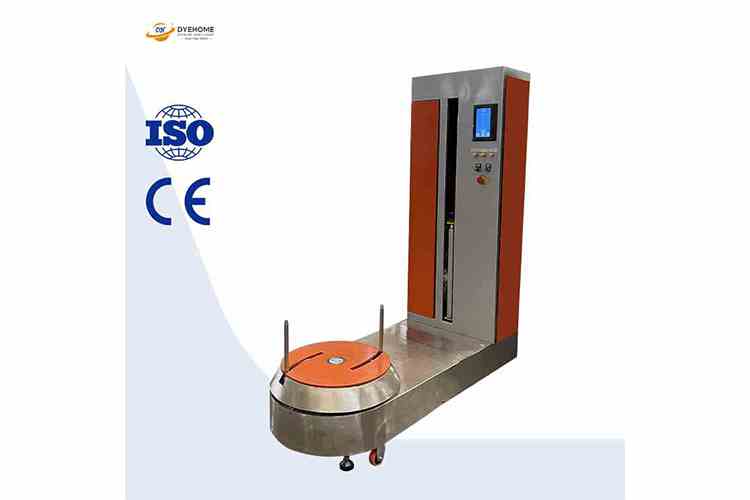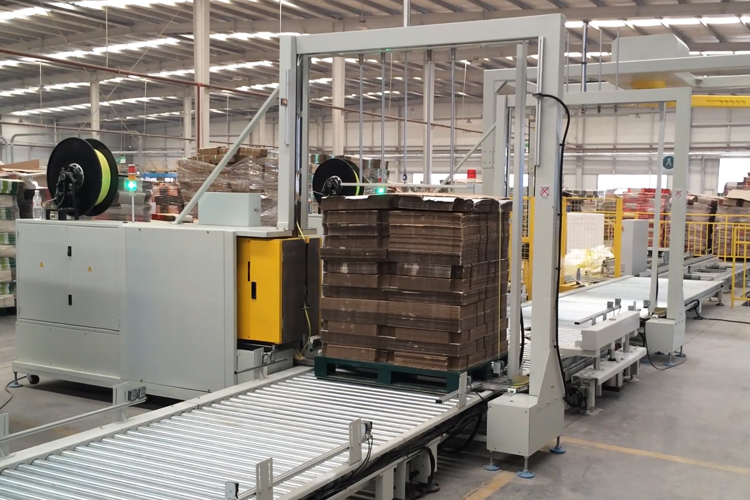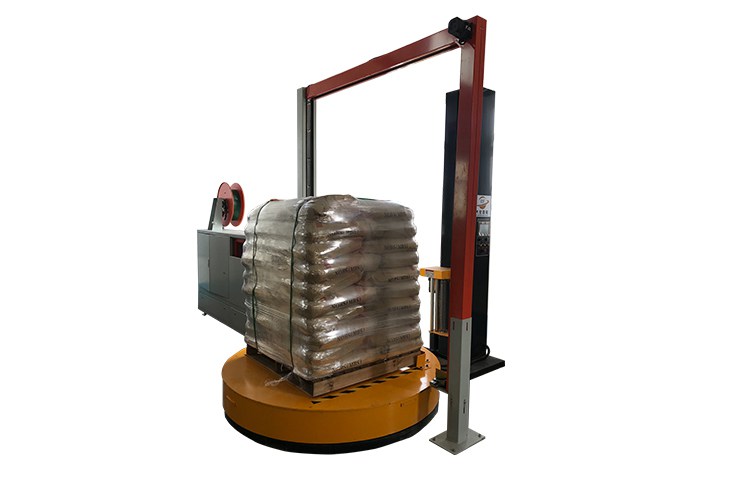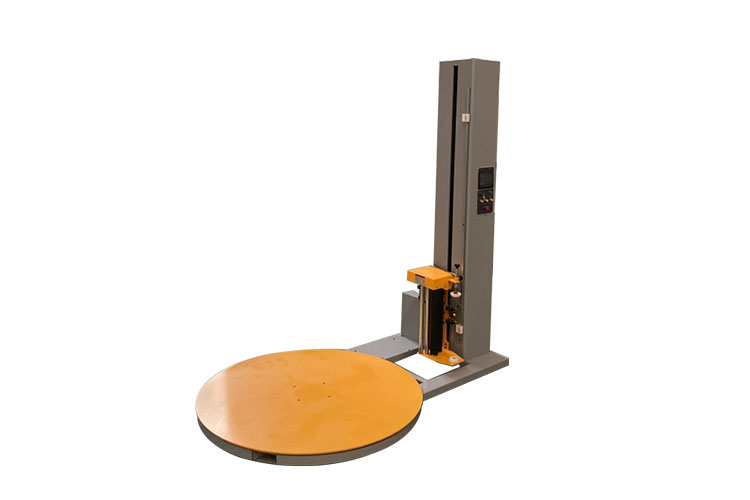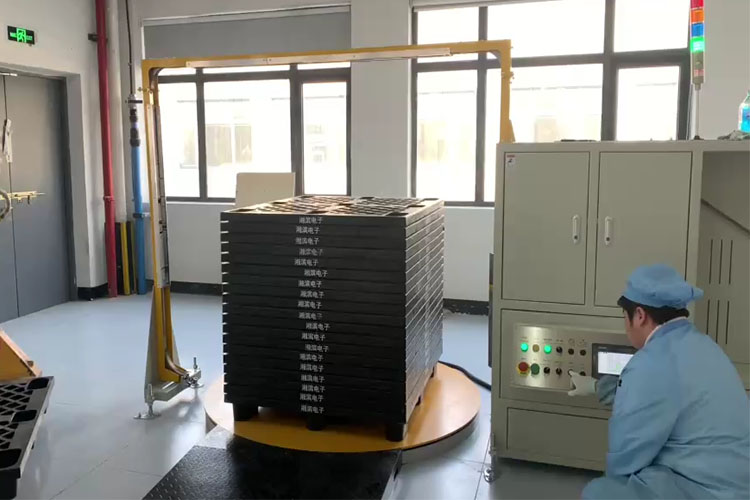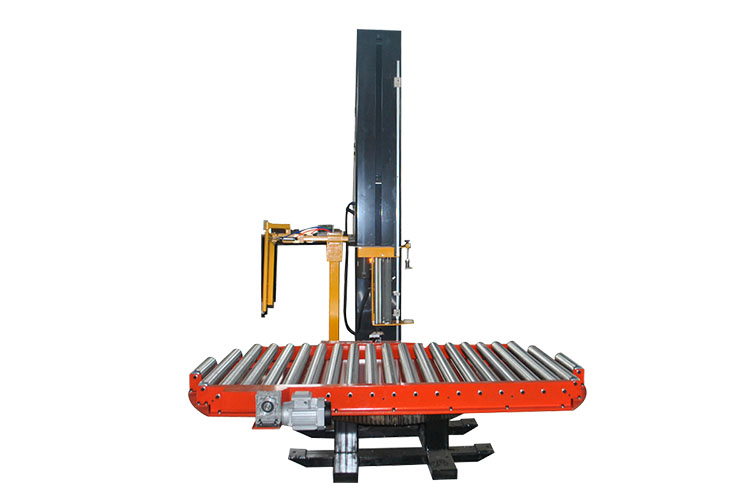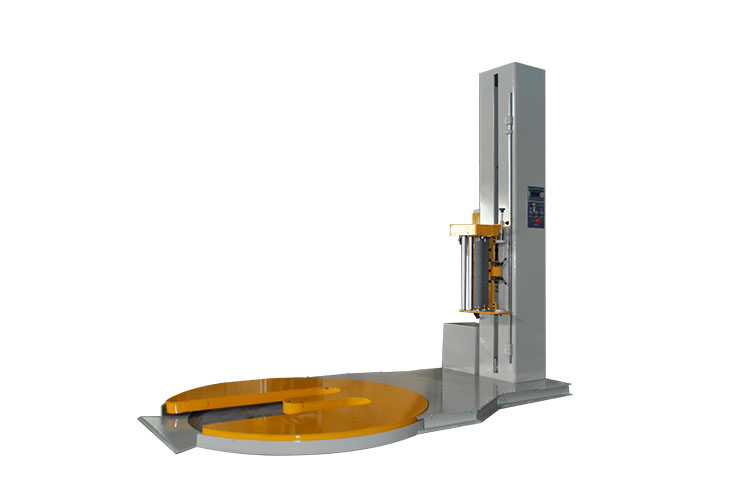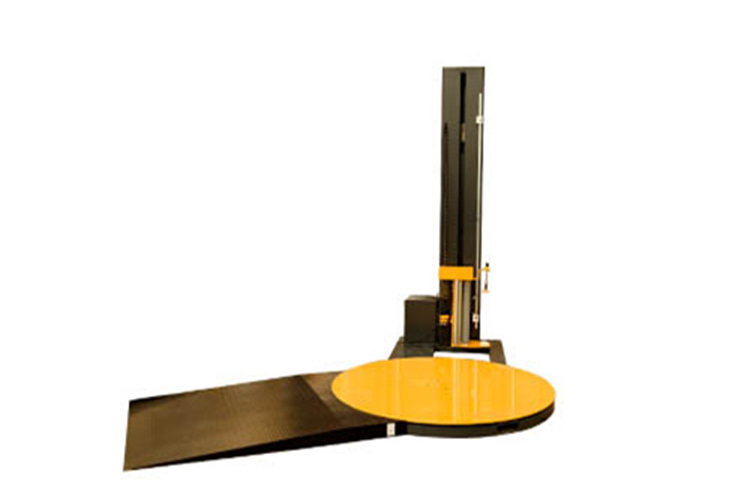Pallet Online Wrapping Machines Seamlessly Integrate Packaging with Production Lines
Date: 2025-08-18Id:346Views:

New Requirements for Packaging in Automated Production Lines
In modern manufacturing and logistics, palletized transport has become a key method for improving loading and unloading efficiency and warehousing standardization. However, manual wrapping and semi-automatic equipment often create bottlenecks in the packaging process, making it difficult to keep pace with high-speed production lines. The advent of the pallet online wrapping machine bridges this gap. It seamlessly integrates with conveyor lines, stackers, and sorting equipment, enabling fully automated operations from goods leaving the line to wrapping completion, significantly improving shipping efficiency. Equipment Principle and Core Features
The in-line pallet wrapping machine utilizes a turntable or cantilever structure. Once the goods enter the packaging station along the conveyor line, the machine automatically completes photoelectric detection, pre-stretched film wrapping, and automatic film cutting and smoothing, requiring no human intervention. The machine supports pallet sizes ranging from 800-1200 mm and cargo heights from 500-2000 mm. The turntable can support a load of up to 2000 kg, meeting the needs of most industries. The film frame pre-stretching ratio is adjustable within 250%, effectively reducing film consumption while maintaining a secure hold. Optional features such as top pressure, top lamination, and reinforcement straps further enhance the stability and protection of goods during transportation.
Applicable Industries and Application Value
The in-line pallet wrapping machine is widely used in industries such as food and beverages, chemical raw materials, electronics and electrical appliances, building materials, papermaking, and glass products. For companies with high production volumes and demanding cycle times, it not only maintains stable packaging efficiency on the production line, but also reduces labor and prevents loose goods or uneven film layers caused by operational variations. Over time, this equipment can significantly reduce labor and consumables costs and improve overall packaging consistency.
Case Study: Production Line Upgrade for a Papermaking Company
A papermaking company previously used manual wrapping, which took an average of four minutes per pallet, severely limiting shipping efficiency during peak season. After introducing an inline pallet wrapping machine, the equipment was integrated with a roller conveyor line, reducing the wrapping time per pallet to approximately 60 seconds. Combined with the top film lamination and bottom reinforcement parameters, the goods remain stable and moisture-proof during long-distance transportation. After implementation, the company's outbound efficiency increased by nearly 40%, and customer feedback on packaging quality also significantly improved.
Conclusion and Selection Recommendations
When selecting an inline pallet wrapping machine, companies should focus on production line layout, product specifications, pre-stretch film rack performance, automation features, and expandability. A suitable model not only meets current needs but also leaves room for future automation upgrades. Overall, this type of equipment allows for a truly seamless integration of the packaging process with the production line, achieving the dual goals of increased efficiency and cost control.
Related


